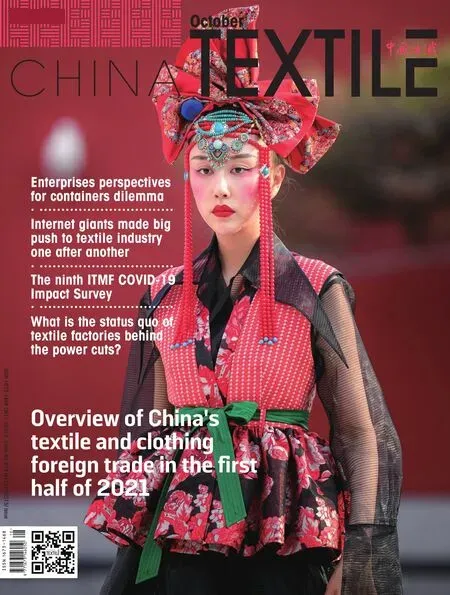Changes in China’s sportswear industry
According to Tmall’s sales data, the total sales volume of Anta Group on Tmall from January to July surpassed all brands, including Nike and Adidas, and topped the list for the first time.
In addition, according to Anta’s 2021 interim performance report, Anta achieved revenue of 22.81 billion yuan in the first half of the year, surpassing Adidas (China)’s revenue of 18.298 billion yuan for the first time, second only to Nike (China)’s revenue of 27.34 billion yuan.
From the above data, Anta has begun to shake the long-term dominance of China’s sports shoes and apparel market led by Nike and Adidas. However, in fact, as early as in March this year in Xinjiang Cotton incident, China’s sports shoes and apparel market has been in the subtle usher in industry changes.
Before the Xinjiang Cotton incident, Nike and Adidas occupied the largest share of the domestic sports shoes and apparel market, and always occupied the top two in the industry. Nike topped the list with a 25.6 percent market share in 2020, followed by Adidas with 17.4 percent, and the two accounted for 43 percent of China’s sports shoes and apparel market share, according to Euromonitor.
Local brands such as Anta and Li Ning have always been at a disadvantage in the competition with international brands due to their late start and lack of innovation capabilities. In order to avoid the head-on competition with Nike and Adidas, most local brands choose to quickly expand through franchising in second-tier cities. In the extensive expansion, some local brands such as Guirenniao and ERKE have caused cash flow crises due to inventory backlogs.
The pattern of China’s sports shoes and apparel market began to reverse until the Xinjiang Cotton incident in March this year.
According to April data from Morningstar, an international rating agency, sales of brands such as Adidas and Nike on Tmall fell 78 percent and 59 percent yearon-year. Sales of Li Ning’s fashion line, China Li-Ning, soared more than 800 percent year-on-year, while Anta’s sales jump 59 percent. In August, Adidas reported a 16 percent drop in sales in Greater China in its second quarter. On the other hand, Anta overtook Nike and Adidas to top the online search.
The decline in the market share of international brands and the popularity of local brands among consumers were caused by, but not limited to, the Xinjiang Cotton incident.
In recent years, local sports brands have taken advantage of the “consumption of domestic products”. In the context of the rise of sportswear categories, Anta and Li Ning have been steadily focused on the creation of product. According to public data, Li Ning’s research and development expenses have reached 362 million yuan in 2019, and Anta announced in July this year that it plans to invest more than 4 billion yuan in research and development costs in the next five years. Local brands such as Anta and Li Ning have adopted brand rejuvenation strategies and multi-brand strategies focus on the youth sportswear field, and gradually open the way to counterattack.
On the other hand, Nike and Adidas, which have been in the domestic market for decades, are now gradually starting to decline.
Public data show that in the first half of 2021, Anta’s financial data in gross profit, gross profit margin and operating profit have exceeded Adidas, and Li Ning’s gross profit margin and operating profit margin are even closer to Adidas.
Aside from the data, Anta and Li Ning still have a long way to go to the top of the Chinese shoe and apparel brands in the middle and high-end market.
For a long time, the main market of local sports brands is the low-end sports consumer market. Compared with international brands whose average price is more than 1,000 yuan, most local sports brand products are below 500 yuan, and the price difference is mainly caused by the brand premium. Not to mention the development of local sports brands is accompanied by “plagiarism”, “design is not fashionable” and other labels. In recent years, in order to tear down these labels, Anta, Li Ning, Xtep and other brands have continued to make efforts in research and development, increasing investment in design and technological innovation, but compared with international brands, there is still a big gap between domestic sports brands in product development, new material application, sports functions and other aspects.
In addition to products, local sports brands should also realize that their current achievements are largely due to the good external environment. Chinese fashion is much favored by Generation Z, and the rising national sentiment due to the pandemic and the Olympic events have all contributed to the success of local sports brands in China’s sports shoes and apparel market.
In general, in the short term, local sports brands are not enough to shake the position of foreign sports brands in the middle and high-end market. In the future, if local brands can catch up with and surpass international brands in product research and development, concept building and marketing, they will have strong brand appeal in the market. Thee history of the world’s sportswear brands will be rewritten, not to mention the pattern of China’s sportswear.


